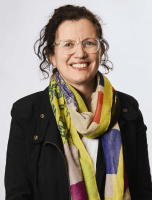In April 2016, the Organisation for Economic Co-operation and Development (OECD) and the European Union Intellectual Property Office (EUIPO) released a report1 on global trade in counterfeit and pirated products.
The report analysed nearly half a million customs seizures around the world over 2011–2013, and examined the impact of counterfeit goods on the economy and international trade. Alarmingly, the report found that trade in counterfeit goods increased by more than 80% in five years – from US$250 billion annually in 2008 to over US$461 billion in 2013. The report highlighted that counterfeit products now represent more than 2.5% of all world trade, including 5% of all imports into the European Union.
The study reiterated a number of known trends, including the wide range of products affected by counterfeiting, from luxury and business goods, through to common consumer products. The sources of counterfeit goods are also on a global scale. Middle income and emerging economies tend to be key players, with China still appearing to be the largest producer.
Interestingly, the study also found that counterfeiters are improving their logistics networks, taking advantage of the huge growth in online shopping. According to the report, postal parcels are the top method of shipping counterfeit goods, accounting for an estimated 62% of seizures between 2011 and 2013. This is explained by the fact that small postal shipments are a way to avoid detection and minimise the risk of sanctions.
This shift in the online practice of counterfeiters was also discussed in a recent study, Social media and luxury goods counterfeit: a growing concern for government, industry and consumers worldwide.2 This study examined the sale of counterfeit goods on social media platforms, in particular Instagram. Researchers found that 20% of 750,000 posts about top fashion brands featured counterfeit and/or illicit products. Most of the vendors identified were found to be based in China, Russia, Malaysia, Indonesia and Ukraine, while the most affected brands seem to be Chanel, Prada, Louis Vuitton and Fendi, along with Rolex and Cartier for luxury watches. According to the report, these new online counterfeit sellers are technology-savvy and widely use instant messenger apps such as Telegram or Whatsapp, which provide end-to-end encryption. They also use fake accounts (or spam-bots), deploy botnets to bypass internal security systems, and are able to post thousands of images daily. If an account is exposed and blocked by Instagram, it may reappear under a new profile name in a matter of days or even hours.
The report highlighted the effect of the internet being used as a ‘giant amplifier’ for the sale of counterfeit goods, giving almost a direct line between producers and consumers with no filter or barrier.
The reports highlight the need for a comprehensive anti-counterfeiting strategy and a cross-sector collaboration to stop infringers. The results of the studies are concerning, as the numbers show that counterfeiting is on the rise and infringers are increasingly using all technologies available to develop their business. If you are experiencing any of these issues in your business, contact us to find out how we can help you.

